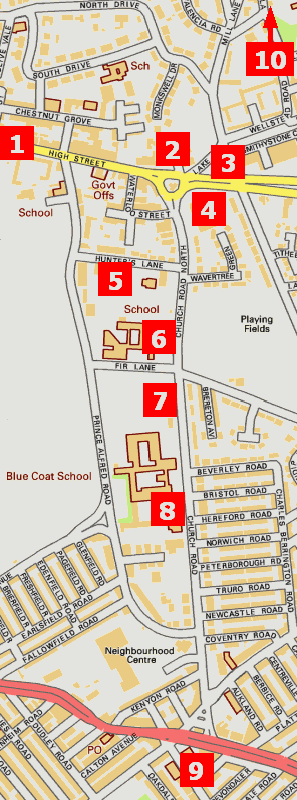|
Welcome to
Historic Wavertree
(continued)
9. St Barnabas Church (1914), Penny Lane L18 1LZ (entrance in Allerton Road)
Two videos - jointly commissioned by St Barnabas Church and the Wavertree Society - have been specially produced by UAV Innovations Group Ltd for this year's 'virtual' Heritage Open Days:
St Barnabas Penny Lane - An Aerial View 2020
and
St Barnabas Penny Lane - Photography by Mike Kirkham 2020
With the growth of Liverpool in the late 19th C, there was a need for a need for a new Church of England church in the Mossley Hill area. In 1900 an existing non-denominational Calvary 'tin' church on Smithdown Rd/Blenheim Rd was purchased for £3050 from the executors of Mr Bramley-Moore, and in 1904 a parish hall was built at a cost of £1175.
The 'tin' church was replaced by a new brick church built in 1912-14 to the designs of the well-known Liverpool architect, J. Francis Doyle. It cost £22,224 and was largely financed (£15,000) by the Misses Singlehurst of Garston in memory of their father Robert Singlehurst, a Liverpool Merchant.
In 1914 a new parish of St Barnabas, Mossley Hill was set up from within the existing SS Matthew & James. It included parts of the old townships of Wavertree and Toxteth Park. The first vicar was Rev. James Kirk Pike. St Barnabas was completed just before the start of World War 1. The church includes a number of memorials to the dead of that war and also the later WW2. Perhaps the most striking is the large stained glass East Window.
|
|

